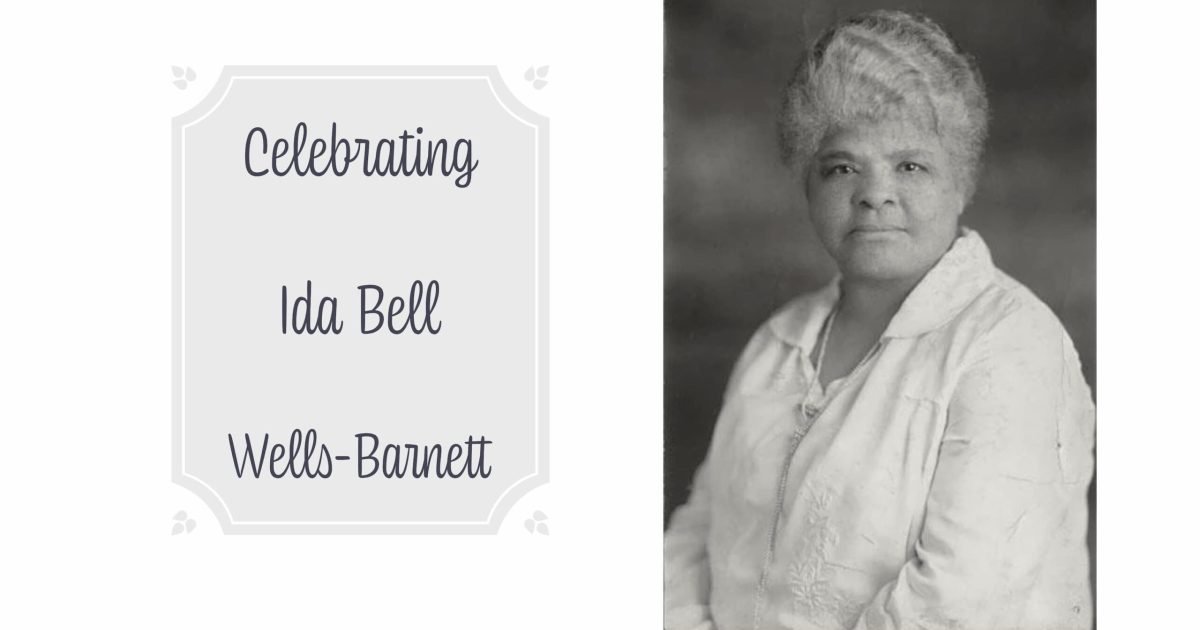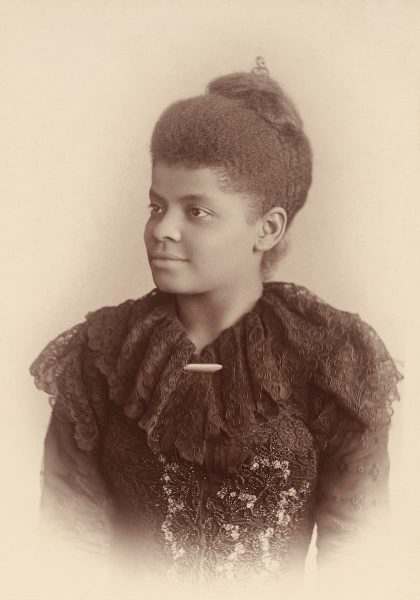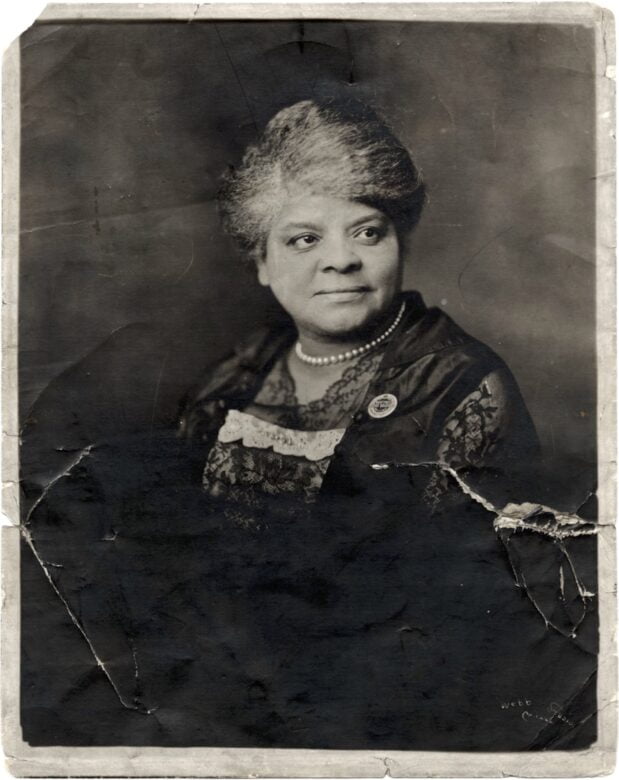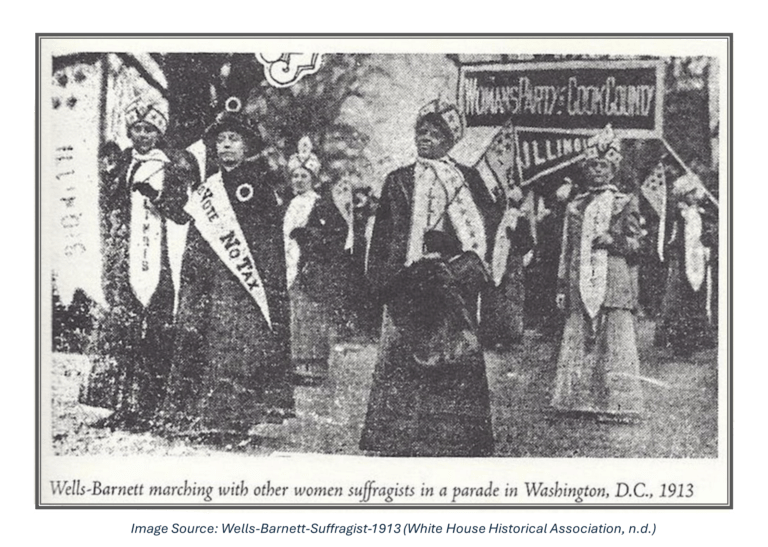
Disclosure: All products recommended in Living Up Blog have been selected by the founder and contributing authors. Some posts include…

Through her investigative journalism, Wells-Barnett exposed the brutal reality of lynching. Wells-Barnett’s activism empowered African Americans to resist and organize against lynching. She encouraged community solidarity, boycotts, and legal challenges. Her legacy inspired future civil rights leaders.

Image Source: Ida B. Wells-Barnett, Mary Garrity – Google Art Project (File: Mary Garrity, 2015).
I happened to complete my research for this post on March 1, the beginning of the celebration of Women’s Month. So, this is doubly joyful for me to post about Ida B Wells-Barnett during National Women’s Month. The post started as an encouragement to write about African American figures of the United States who stood against the odds, literally facing death, to make a change for humanity. I wanted to post this during February as part of Black History Month advocacy, but I got lost in the research of this fascinating figure, who happens to be a woman worthy of admiration and an inspiration to all women today.
The more I read about the abuse against innocent African American people and her determination to tell the world, the more I realized how easily some people would ignore history because it is very hard to recognize all those brutal, inhumane wrongs that we must learn about to make things better for the future.
This reality check has been one of the hardest to understand because of the many images of brutality within a century.
It’s very difficult to be absolute on where you stand in your beliefs when you don’t have the whole picture, but there is no reason to question or find a reason for the abuse and brutality and the killing of living beings, including humans; it’s simply unacceptable. To think that so many tried to cover up the lynchings that started to become frequent after the Civil War is delusional and psychotic.
Ida Bell Wells-Barnett was born on July 16, 1862, on the Bolling Farm near Holly Springs, Mississippi. She was an American journalist, social reformer, and fierce advocate for justice.
I believe her father’s education, idealism, and involvement in politics influenced her strong political opinions. She attended Shaw College (Rust College today), where her father had been a trustee. She was the oldest of her siblings, and after a yellow fever epidemic, only she and five of her siblings survived.
From her humble beginnings, having been a slave herself and suffering the loss of her parents and infant brother at age 14, she and her grandmother moved the rest of the family to Memphis, Tennessee, where she was able to work as a teacher and started to report for a local newspaper on racial segregation and inequality. Her journalistic career and outspoken attitude brought her to Chicago, where she worked with black-owned newspapers.
Nikole Hannah-Jones from The New York Times Magazine explains in the documentary Exposing ‘Southern Horrors’ (PBS, 2021a) how Mrs. Wells-Barnett could have seen her role to do something about the oppression of black people after the Civil War.
“Black freedom, black political power was always contested, and so all across the south, we saw black men, women, and children being lynched…I don’t think that we should take a second and really explicate what that word means. Lynching was not simply tying a rope around someone’s neck and hanging them, though that is brutal and inhumane enough. Lynching was designed directly to send a message to the larger black population in the South and many places where black people were in the majority.” (PBS, 2021a)
Wells-Barnett’s writings challenged the white power structure. She advocated for Black citizens to move to the West and urged boycotts of segregated streetcars. Her work directly confronted racial discrimination and injustice (McNamara, 2020).
She was exposed to other issues that were relevant to women and became involved in the women’s suffrage movement. Before Rosa Parks, Ida B. Wells-Barnett saw herself in a segregation battle with the Chesapeake & Ohio Railroad. When seats were unavailable in the smoking car, she took a seat in the “first-class ladies car” and refused to give up her seat, which gained her publicity in Memphis, and the case was brought to court. After realizing her first attorney was paid off by the railroad, she hired a white attorney who helped her win the case in 1884. Unfortunately, it was reversed in 1887 by the Tennessee Supreme Court (Wikipedia, 2024).

Image Source: Ida B. Wells-Barnett, wearing “Martyred Negro Soldiers” button, ca. 1917-1919. (White House Historical Association, n.d.)
When she published her investigative work on lynching, white mobs in Memphis responded by burning down her press and threatening her life. Despite these threats, she persisted in her mission to expose the horrors of lynching (Hendricks et al, n.d.).
In her pamphlet titled “Southern Horrors: Lynch Law in All Its Phases”, she provided evidence that white men were rarely punished for sexual violence against African-American women, while African-American men were lynched for consensual relations with white women. She exposed the hypocrisy and brutality of the system (Steptoe, n.d.).
In her pamphlet titled “Southern Horrors: Lynch Law in All Its Phases”, she provided evidence that white men were rarely punished for sexual violence against African-American women, while African-American men were lynched for consensual relations with white women. She exposed the hypocrisy and brutality of the system (Steptoe, n.d.).
In 1895, she published “The Red Record,” the first documented statistical report on lynching. This groundbreaking work shed light on the brutal violence faced by African Americans.
Despite little support from presidents, Wells-Barnett’s petitions reached the White House during multiple administrations. Her legacy inspired successive African-American activists who continued the campaign for national anti-lynching legislation. This goal was finally achieved in 2020, over a century after her initial efforts (Mobley, 2021).
Wells-Barnett contributed to newspapers, including her husband’s Chicago Conservator, and amplified the voices of marginalized communities. She fought for racial equality and justice.
In 1910, she founded Chicago’s Alpha Suffrage Club, possibly the first Black women’s suffrage group. Her efforts paved the way for women’s rights and empowerment.
Some key aspects of her influence include raising awareness, challenging stereotypes, advocating for legal action and international attention, and empowering African Americans. She raised awareness through her investigative journalism, exposing the brutal reality of lynching. She challenged the prevailing stereotypes that justified lynching. By highlighting cases where victims were falsely accused or lynched for minor offenses, she undermined the notion that lynching was a necessary response to criminal behavior.

Courage and Persistence: Wells-Barnett’s unwavering courage and persistence in the face of adversity teach us to stand up for what is right, even when it’s difficult.
Use Your Voice: She used her writing and speaking skills to effect change. Girls and women can learn to use their voices to advocate for justice and equality.
Intersectionality: Wells-Barnett’s work spanned civil rights, women’s suffrage, and anti-lynching efforts. She reminds us that fighting for justice often involves addressing multiple interconnected issues.
Community Building: Her involvement in organizing local African American women shows the power of community. Girls and women can learn to build supportive networks and collaborate for change.
Advocacy for Legal Action: Wells-Barnett advocated for legal action against perpetrators of lynching. She called for accountability, demanding that those responsible be brought to justice. Her efforts contributed to increased awareness among lawmakers and the public.
International Attention: Her work extended beyond national borders. She traveled to Europe and exposed the issue of lynching on an international stage. This global attention put pressure on the U.S. government to address the problem.
Empowering African Americans: Wells-Barnett’s activism empowered African Americans to resist and organize against lynching. She encouraged community solidarity, boycotts, and legal challenges. Her legacy inspired future civil rights leaders.
In summary, Ida B. Wells-Barnett, a courageous African-American journalist and activist, faced a range of responses from white Americans due to her relentless work against lynching. Her work provoked both resistance and progress. Her courage and determination continue to inspire those fighting against racial violence and discrimination. Ida B. Wells-Barnett’s enduring legacy inspires us to continue the fight for a more just and equitable world. Mrs. Wells-Barnett’s work profoundly impacted the fight against lynching in the United States, a goal that was finally achieved more than a century after her initial efforts in 2020.
In summary, Ida B. Wells-Barnett’s relentless pursuit of justice and her unyielding commitment to ending lynching left an indelible mark on American history. Her courage and determination continue to inspire activists fighting against racial violence and inequality.
Her legacy continues to inspire generations, especially girls and women, to stand up against injustice.

– Ida B. Wells
Sources:
BrainyQuote. (n.d.). Ida B. Wells. Quote. BrainyQuote.com
Britannica, T. Editors of Encyclopaedia (2 Feb 2024). Ida B. Wells-Barnett. Encyclopedia Britannica.
File: Mary Garrity. (13 Jan 2015). Ida B. Wells-Barnett – Google Art Project Image – restoration crop.jpg. Wikipedia. Ida B. Wells Barnett in a photograph by Mary Garrity from c. 1893, Public Domain.
Hauttzinger, D. (14 Feb 2018). Frederick Douglass’s Defiant Stand at Chicago’s World’s Fair. WTTW Playlist.
Hendricks, W. A., Pennington Jones, P., and Rolland Taylor, C. (n.d.). Ida Wells-Barnett Confronts Race and Gender Discrimination. Illinois State Library, Illinois History Teacher 1996.
Historian, The. (1 Jun 2023). Ida B Wells Timeline. Have Fun With History.
Library of Congress. (n.d.). Ida B. Wells-Barnett (1862 – 1931). Library of Congress, Digital Collections, African American Perspectives: Materials Selected from the Rare Book Collection, Articles and Essays, Daniel Murray: A Collector’s Legacy by John Y. Cole.
University of Chicaco. A Voice for Justice, The Life and Legacy of Ida B. Wells. Library of the University of Chicago.
McNamara, R. (30 Jul 2020). Ida B. Wells Crusading Journalist Campaigned Against Lynching in America. ThoughtCo, Humanities, History & Culture.
Mobley, T. (9 Apr 2021) Ida B. Wells-Barnett: Anti-lynching and the White House. The White House Historical Association.
PBS. (21 May 2021). Exposing ‘Southern Horrors’. PBS, Chicago Stories, video.
PBS. (21 May 2021a). Exposing ‘Southern Horrors’. PBS, Chicago Stories, video interview of Nikole Hannah-Jones.
Steptoe, T. (n.d.) Ida B. Wells-Barnett, Journalist, Civil Rights Activist and a Founding Member of the NAACP. Social Welfare Library, Eras, Civil War Reconstruction.
White House Historical Association, The. (n.d.). Ida B. Wells-Barnett, wearing “Martyred Negro Soldiers” button, ca. 1917-1919. Image from Tianna Mobley Article April 9, 2021. Ida B. Wells Papers, Special Collections Research Center, University of Chicago Library
Wikipedia. (28 Feb 2024). Ida B. Wells. Wiki.

Disclosure: All products recommended in Living Up Blog have been selected by the founder and contributing authors. Some posts include…

Disclosure: All products recommended in Living Up Blog have been selected by the founder and contributing authors. Some posts include…

Indian spices and culinary history dates back millennia, used both dried and fresh produce unique dishes, but it's hard to…

Diwali, the Festival of Lights, is a significant Hindu celebration symbolizing the triumph of light over darkness. Celebrated by Hindu…

Many of us love mushrooms and others just started noticing them. They gained the spotlight and surged in popularity, because…

Disclosure: All products recommended in Living Up Blog have been selected by the founder and contributing authors. Some posts include…

Disclosure: All products recommended in Living Up Blog have been selected by the founder and contributing authors. Some posts include…

Cooking with herbs and spices is the tool for chefs to create a symphony of flavors that dance on our…

Tzatziki is a creamy sauce that complements many Greek dishes, perfect for dipping, and for those with dietary concerns like…